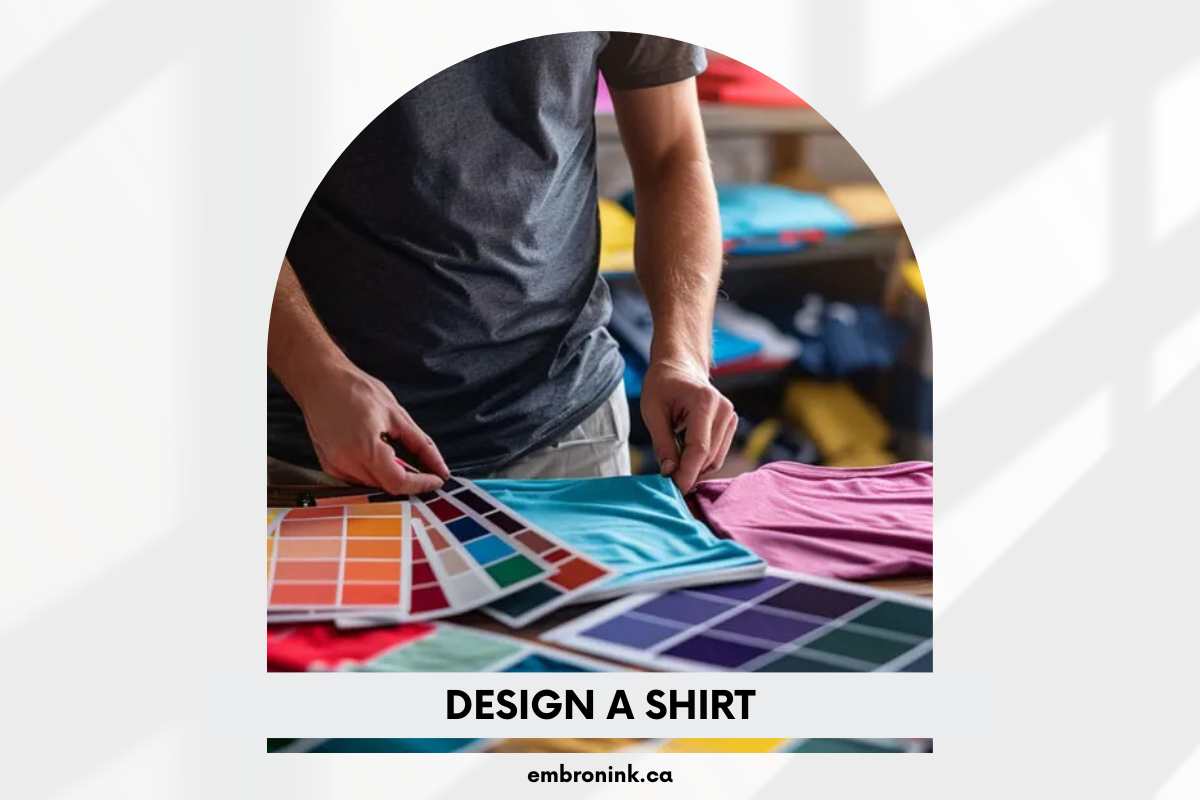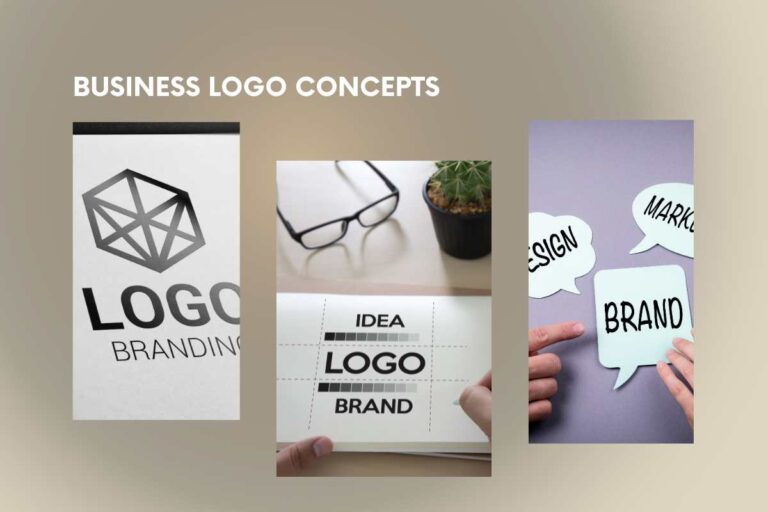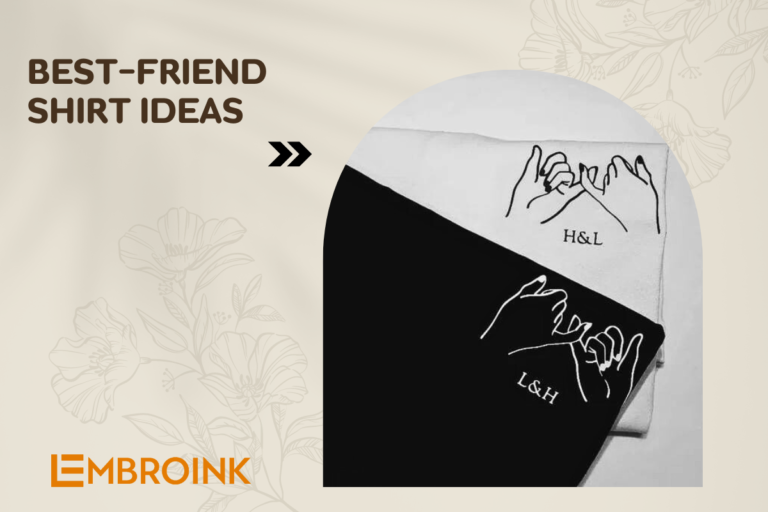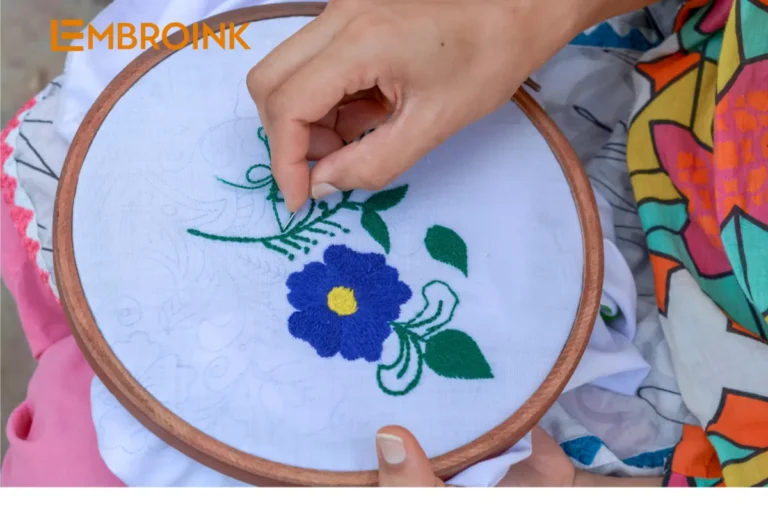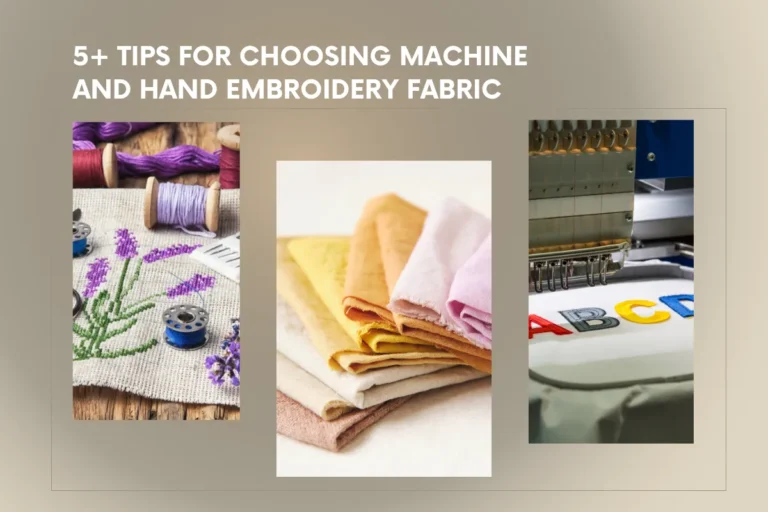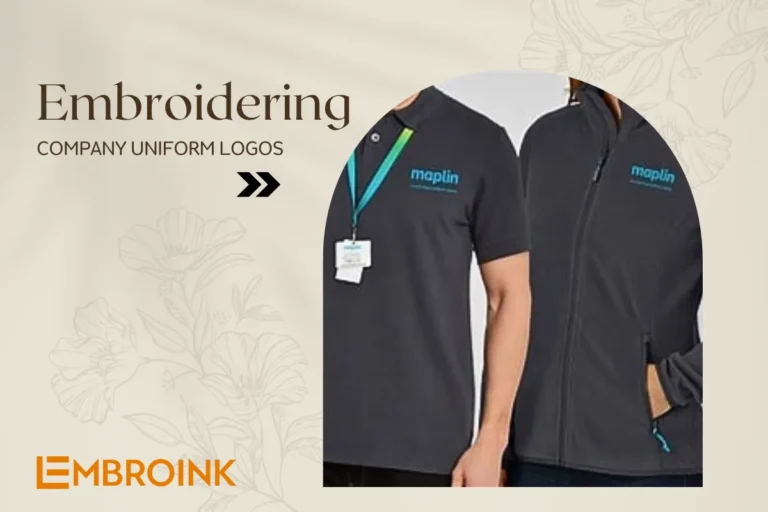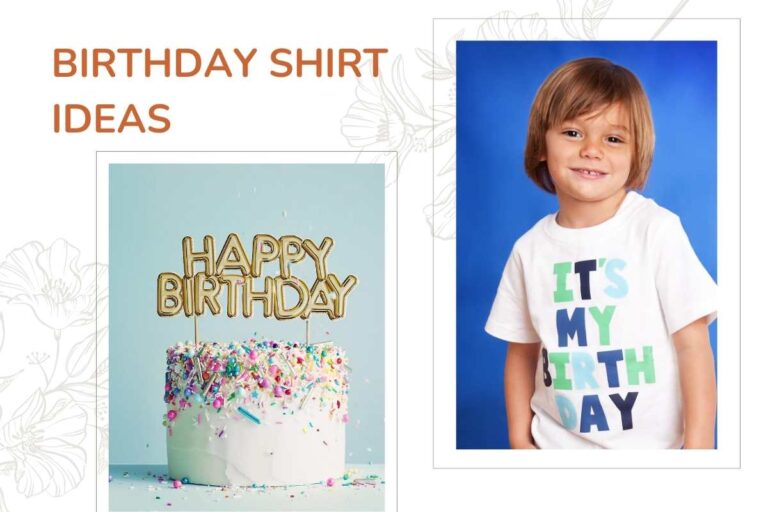A complete guide to designing a shirt: Step by step
Creating custom t-shirts is a fulfilling and imaginative endeavor, whether you’re looking to launch a business, promote an event, or create personalized gifts. Custom t-shirts provide distinct advantages, such as increased visibility, enhanced brand recognition, and a means for personal expression. In this comprehensive guide, EmbroInk will walk you through a complete guide to design a shirt: Step by step, addressing everything from setting your goals and budgeting to selecting the best printing method and choosing the right t-shirt style. With practical advice and tips for both newcomers and seasoned designers, this guide will serve as an essential resource to help you effortlessly turn your creative ideas into reality.
A complete guide to designing a shirt: Step by step
Whether you’re a beginner or have some design experience, this guide will break down the t-shirt design process into clear, manageable steps to ensure you navigate each stage effectively.
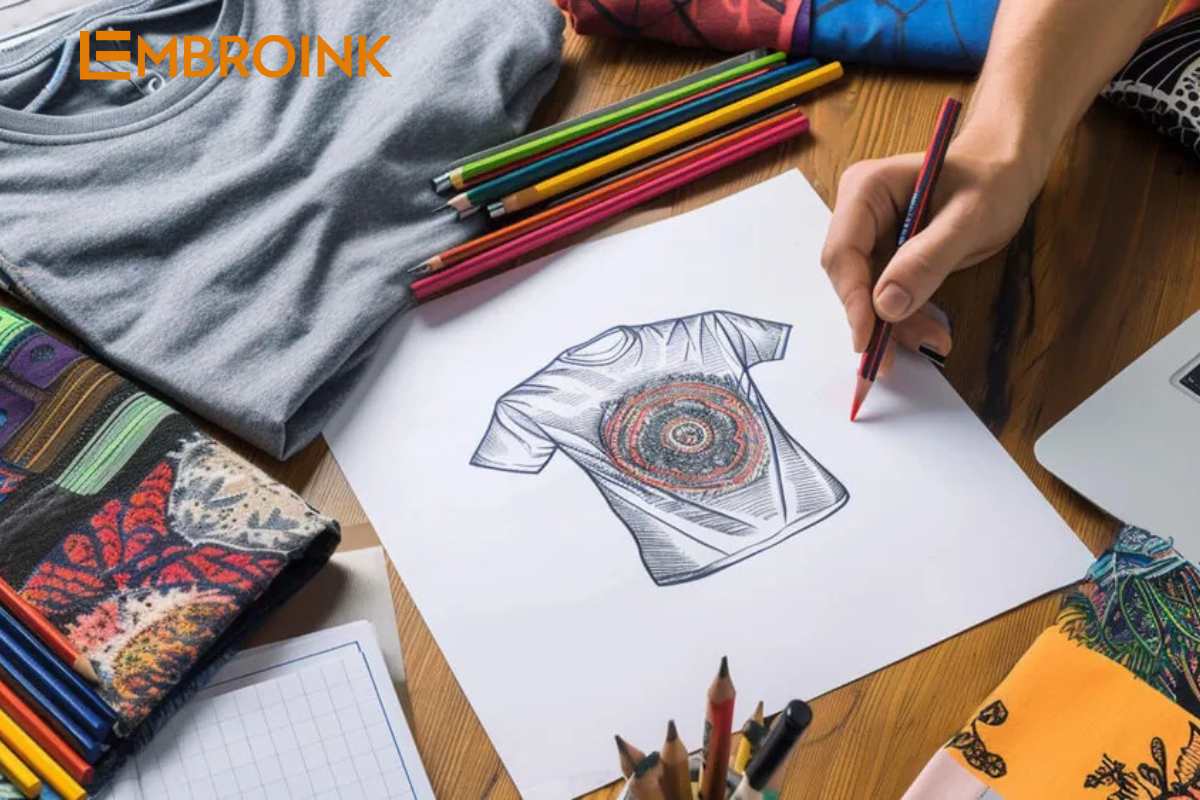
Determine Your Goals
Before starting your t-shirt design, it’s crucial to identify the goals behind the product, as they significantly influence your creative and production choices.
- Purpose: Are you creating t-shirts for promotional purposes, branding, fundraising, or personal use?
- Impact on Design: For example, a promotional t-shirt might prioritize logo prominence, while a fundraising t-shirt could emphasize an impactful slogan.
Understanding your objectives will help ensure that your design, budget, and printing method are aligned, resulting in a cohesive and effective final product.
Establish a Budget
The cost of designing and producing t-shirts can vary widely based on several factors:
- Design Complexity: More intricate designs may require more resources.
- Materials: The quality of fabrics and inks can affect overall costs.
- Printing Method: Options such as screen printing or direct-to-garment each have different price points.
- Distribution: Consider costs for shipping or retail if applicable.
Start by estimating design costs, whether for software or hiring a designer, and choose quality materials within your budget. Setting a realistic budget helps prevent overspending, ensuring your project remains profitable.
Select a T-Shirt Printing Method
Now that you have your graphic design ready, it’s time to consider how to transfer it onto your t-shirts. Choosing the right printing process is crucial, so here’s an overview of the most common printing options along with their strengths and weaknesses.
Silk Screen Printing
Description: Screen printing presses ink through a mesh stencil onto the fabric.
- Strengths:
- Produces vivid colors.
- Great for simple designs with limited colors.
- Weaknesses:
- Best suited for simple designs; intricate designs require multiple setups and screens, increasing print costs.
- High setup costs necessitate bulk orders to offset expenses.
Design a shirt: Vinyl Cutting
Description: This method involves cutting designs from colored vinyl sheets and heat-pressing them onto the t-shirt.
- Strengths:
- Durable and offers a vibrant range of colors.
- Great for sharp, vibrant designs and works well for smaller orders or personalized items.
- Weaknesses:
- Limited to less intricate designs due to the nature of vinyl cutting.
- Color limitations can restrict design options.
- Ideal Use: Vinyl cutting is the preferred method for personalized gifts and small businesses that need to fulfill low-quantity, high-quality orders without the complexities of bulk printing.
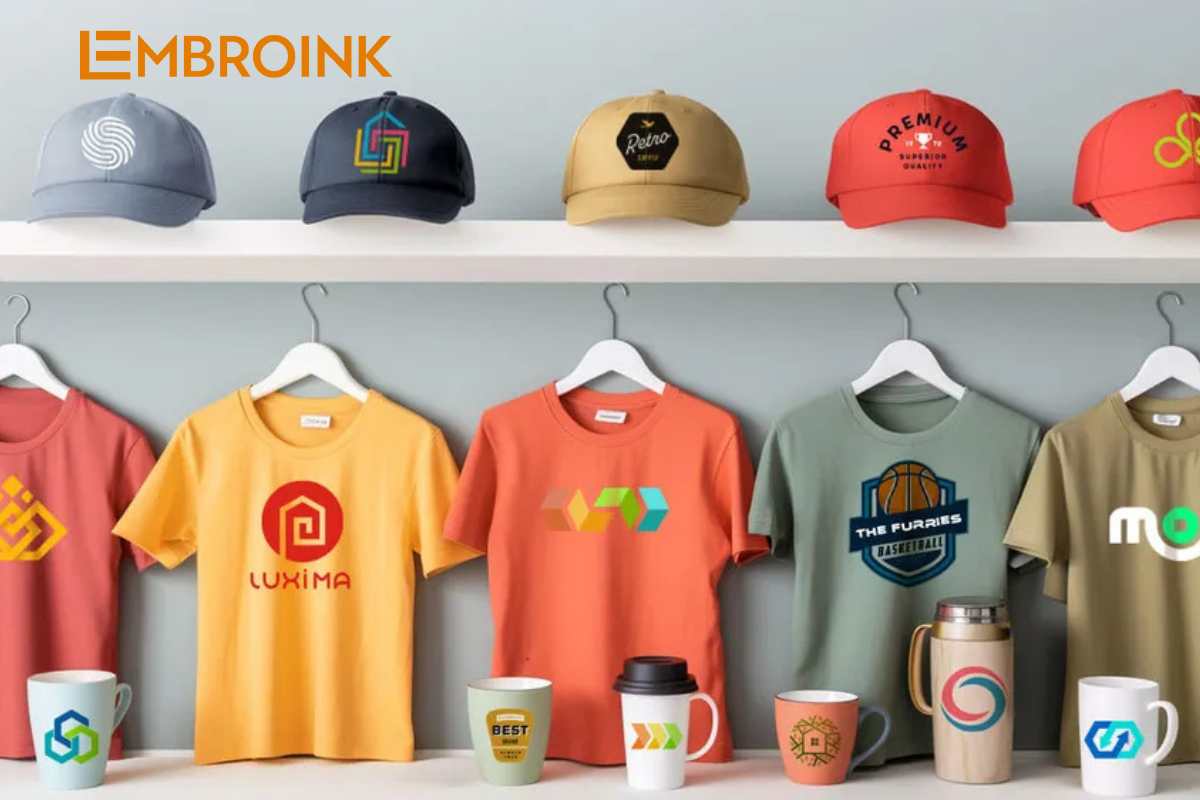
Direct-to-Garment Printing
Description: This digital process applies specialized ink directly onto the fabric.
- Strengths:
- Ideal for high-quality, detailed designs with no color limitations.
- Provides a soft fabric finish, as it is compatible with cotton t-shirts.
- Durable prints because the ink penetrates the fabric fibers.
- Ideal Use: Best for small runs and on-demand printing, making it perfect for custom designs without the need for large inventory.
When selecting a printing method, consider your design complexity, order size, and budget to find the best fit for your t-shirt project!
Define Your T-Shirt Design Concept
A t-shirt design concept is the foundational idea or theme that guides the overall design of your shirt. This creative vision encapsulates what your t-shirt aims to communicate, whether it’s a bold statement, a playful image, or a logo. The concept is significant as it serves as the blueprint for your design.
To help you develop your design concept, consider these brainstorming methods:
- Mind Mapping: Start with a central idea and branch out with related themes and concepts. This visual approach can help generate various design possibilities.
- Sketching: Put your ideas on paper. Quick sketches can stimulate creativity and refine your vision.
- Researching Trends: Look at current design trends in t-shirts. This can provide inspiration and help you understand what resonates with your audience.
It’s essential to align your design concept with your goals and target audience for success:
- Promotional Goals: Focus on branding elements that prominently highlight your business. This can include your logo, brand colors, and key messages that reflect your brand identity.
- Personal or Fundraising T-Shirts: Emphasize the cause or theme that will connect emotionally with supporters. The design should evoke feelings and create a sense of community among wearers.
By ensuring your design concept aligns with your objectives and audience, you’ll create a more impactful and effective t-shirt that resonates with those who see it.
Design a shirt: Choose Your T-Shirt
Selecting the right t-shirt is a crucial step in the design process. Every aspect, from the fabric to the fit and cut, plays a significant role in creating a t-shirt that stands out and aligns with your goals.
Fabric
Most t-shirt sellers opt for cotton, polyester, or a blend of both for their material base. Keep in mind that your chosen printing process may limit your fabric options. For instance, avoid dye sublimation on cotton t-shirts or dark colors.
- Cotton: Soft, comfortable, and durable, but prone to shrinkage and fading after multiple washes. If your target market is eco-conscious, consider offering t-shirts made from 100% certified organic ring-spun cotton, which is grown without chemical pesticides, fertilizers, or genetic modification.
- Polyester: Retains size and color well over time but can pill and hold odors. It’s less breathable than natural fabrics, which may make it uncomfortable in hot weather.
- Blended Fabrics: Combine the benefits of both materials but may be more expensive and present quality control challenges. Special care is often needed to maintain their quality.
Weight
The fashion industry categorizes t-shirts based on the thickness of the fabric:
- Lightweight T-Shirts: Soft, breathable, and comfortable, ideal for outdoor activities and workouts. However, the light fabric can cause designs to wear out more quickly.
- Midweight T-Shirts: Offer a balance of durability and comfort, less susceptible to shrinking and wrinkling compared to lightweight options.
- Heavyweight T-Shirts: Provide maximum durability, making them suitable for workwear and cooler weather.
Fit
Understanding the fit of your t-shirt can help you cater to different demographics:
- Slim-Fit T-Shirts: Snug and popular among younger demographics.
- Regular-Fit T-Shirts: Classic style that suits various body types.
- Relaxed-Fit T-Shirts: Offer more room in the chest and waist, preferred by older buyers who prioritize comfort.
Cut
Choosing the right cut can enhance your design concept and appeal to your target audience. Here are some common t-shirt cuts to consider:
- Crewneck T-Shirts: A classic round neckline that sits close to the neck, versatile for a variety of designs.
- V-Neck T-Shirts: Feature a neckline forming a “V” shape, providing a stylish option but may not suit all designs.
- Ringer T-Shirts: Similar to crewnecks but with contrasting colors on the collar and sleeves, lending a retro appearance and allowing for creative color experimentation.
By carefully selecting the fabric, weight, fit, and cut, you can create a t-shirt that not only looks great but also aligns perfectly with your design goals and resonates with your target audience.
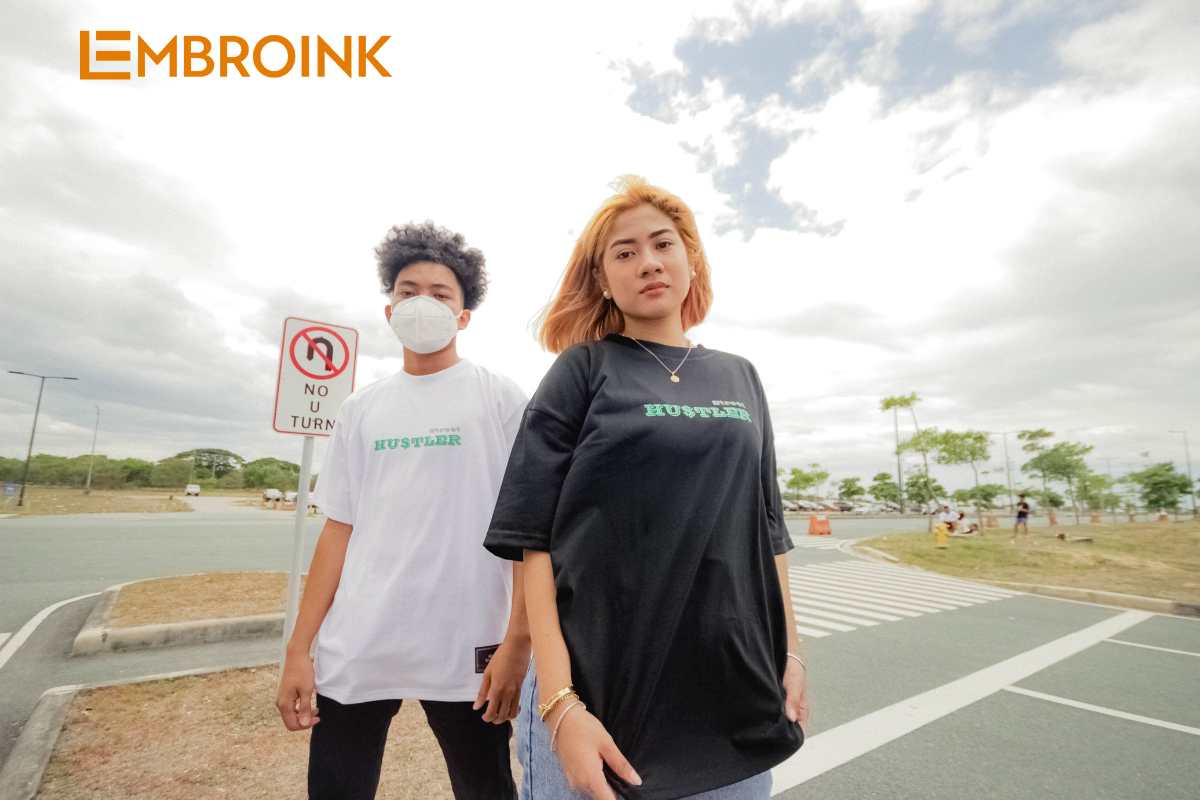
Brainstorm Ideas
Brainstorming sessions are essential for developing unique t-shirt design concepts. Here are some effective methods to help you generate creative ideas:
Start by jotting down all your ideas on a piece of paper or using a digital tool. Create a central theme related to your t-shirt design and branch out with related concepts, colors, and styles. This visual representation can help you see connections between different ideas.
Whether you prefer traditional pencil and paper or a digital drawing tablet, sketching allows you to quickly translate your thoughts into tangible designs. Don’t be afraid to experiment with different layouts, fonts, and graphics. This process can help refine your concepts and inspire new directions.
Explore design platforms like Pinterest, Instagram, or Behance to discover what’s popular in the t-shirt world. Pay attention to colors, styles, and themes that resonate with your target audience. This research can inform your designs and keep them relevant.
Above all, focus on creativity and originality during your brainstorming sessions. Authentic designs that reflect your unique vision will resonate more with customers and help differentiate your t-shirts from the competition. Aim to create designs that tell a story or convey a message that connects emotionally with your audience.
By employing these brainstorming techniques, you can cultivate a pool of innovative ideas that will set the foundation for your t-shirt design process.
Design a shirt: Choose a Color Scheme
Selecting a color scheme for your custom t-shirt design is crucial as it communicates a message and evokes feelings in the viewer. Here are some key considerations for making effective color choices:
- Identify the mood or message you want your design to convey. Different colors evoke various emotions:
- Blue often symbolizes trust and calm.
- Red can evoke excitement or urgency.
- Align your color choices with the emotions or messages you want your t-shirt to project.
- If your design is for a brand, incorporate the brand’s color palette to maintain consistency in branding. This helps strengthen brand recognition and fosters a cohesive visual identity.
- It’s beneficial to incorporate multiple colors, but focus on one primary color with a few complementary accents. This approach ensures that your t-shirt colors work harmoniously without clashing or overwhelming viewers.
The fabric color of your t-shirt plays a significant role in how your printing colors appear. Different backgrounds can dramatically affect the visibility and vibrancy of your design: Darker shades may make ink colors pop, enhancing visibility. Light or neutral fabrics can provide a clean background, allowing intricate designs to shine.
Don’t hesitate to experiment with various combinations until you find a scheme that resonates. Consider how different fabric colors interact with your design colors for an exciting effect. By thoughtfully choosing your color scheme, you can enhance your custom t-shirt design’s impact and ensure it effectively communicates the intended message to your audience.
Choose Fonts and Typography
The selection of font styles—such as serif, sans-serif, script, and display—plays a pivotal role in shaping the visual appeal of your design. Serif fonts exude a timeless and classic charm, whereas sans-serif fonts offer a contemporary and streamlined feel.
Script fonts add a touch of sophistication, while display fonts are designed to grab attention with their distinctive features. Ensuring font legibility is essential, as it directly affects how effortlessly viewers can read and comprehend the text. Using clear and readable typography enhances effective communication and shapes viewer perception positively.
When incorporating text into your t-shirt design, aim to minimize the number of different fonts used. Relying on multiple fonts can overwhelm the viewer and dilute your message. Instead, opt for a few straightforward font choices to maintain clarity and impact in your design.
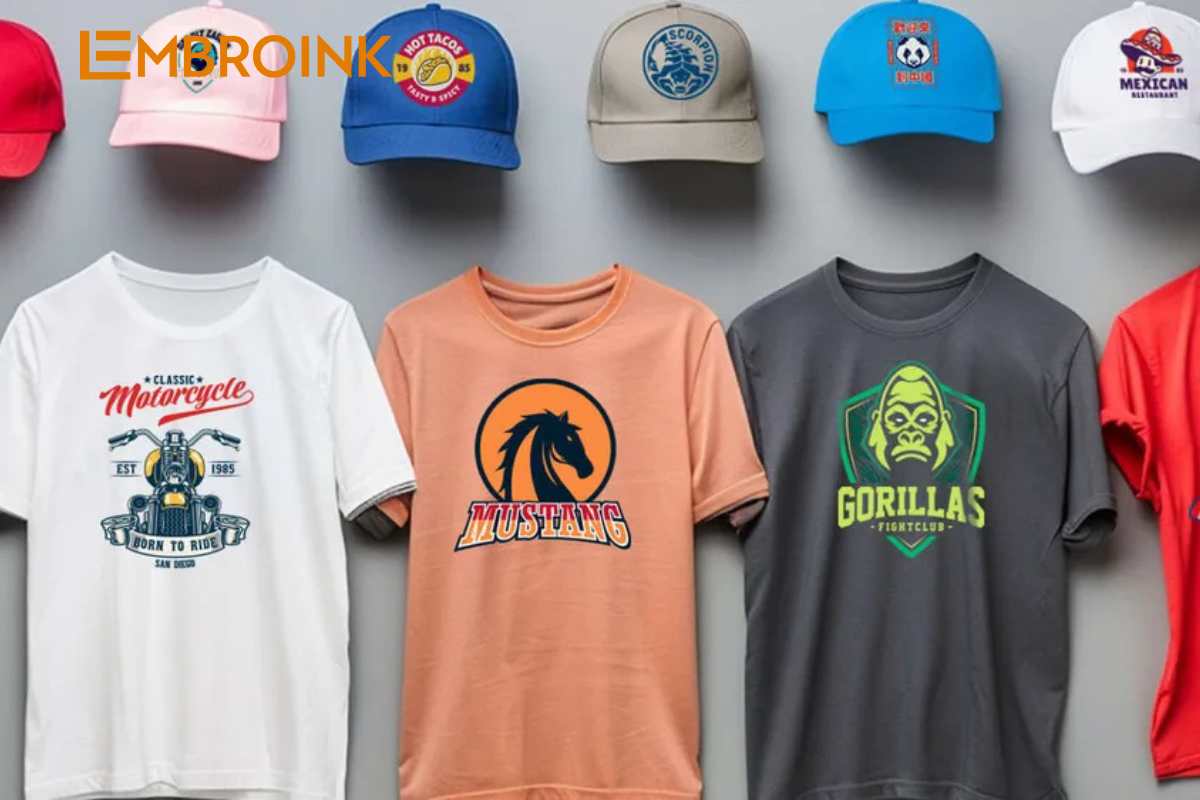
Consider Design Placement
Effective design placement is crucial, and the optimal choice depends on the purpose of your t-shirt. Common areas for placing designs include the front, back, and sleeves, each offering unique visibility and aesthetic qualities. Front designs typically serve as the focal point, making them perfect for logos or main graphics. In contrast, back designs can accommodate larger, more intricate visuals, while sleeve prints provide a subtle yet stylish accent.
When determining placement, consider elements such as the shirt’s fabric, the complexity of your design, and your target audience. Achieving a sense of balance is essential; ensure that the design aligns with the shirt’s cut and fit to enhance both its overall attractiveness and wearability.
Create Digital Mockups
Digital mockups play a vital role in the design process, offering a realistic preview of your t-shirt design. They ensure that the colors, placements, and overall look align perfectly before you proceed with printing. This crucial step helps prevent costly errors and gives you the assurance that the final product will meet your expectations.
Prepare Files for Printing
Preparing your design files for printing is essential to achieve high-quality t-shirts. Properly formatted files help avoid issues such as blurry images, incorrect colors, or misaligned prints, ensuring that your vision is realized exactly as you envisioned it.
Start by setting your resolution to a minimum of 300 DPI (dots per inch) to maintain sharpness and clarity in your design. For graphics and logos, it’s best to use vector files (like AI or EPS), while high-resolution raster files (like PNG or TIFF) work well for detailed images and photographs.
When creating your files, be sure to use the CMYK color profile instead of RGB, as CMYK is specifically optimized for print. Additionally, incorporate a bleed area (typically 1/8 inch) around your design to prevent any unwanted white edges on the final product. Lastly, clearly name and organize your layers in the design file to facilitate the printing process and minimize the risk of errors.
Design a shirt: Order Samples
Once you’re satisfied with your digital mockups, it’s time to order samples from your chosen supplier. This step is crucial for ensuring that all the design elements look as intended on the actual shirt rather than just on a computer screen.
When evaluating the t-shirt samples, pay close attention to the print quality. Look for any misalignment, blurring, or color inconsistencies that could affect the overall appearance. Run your fingers over the print to assess the texture; it should feel smooth and integrated with the fabric, avoiding any stiffness or peeling edges.
Additionally, evaluate the fabric quality by considering its texture, weight, and overall durability. Look for inconsistencies in color, stitching flaws, or signs of material weakness. It’s also a good idea to wash and dry the sample to see how well it withstands laundering—this can provide insights into potential shrinkage, fading, or print wear over time.

